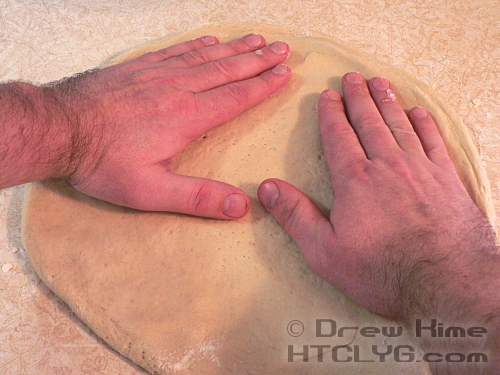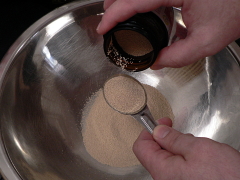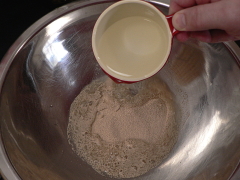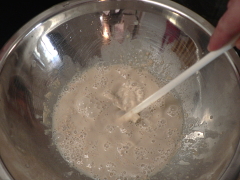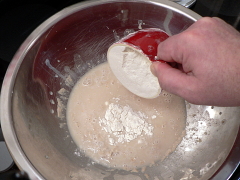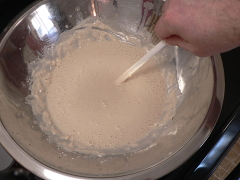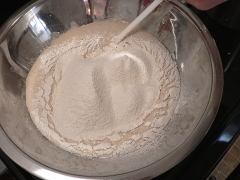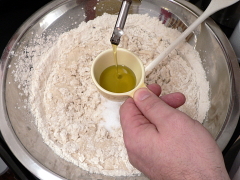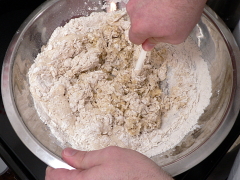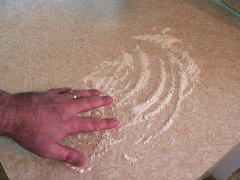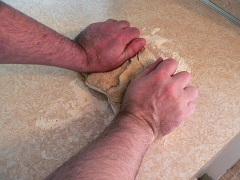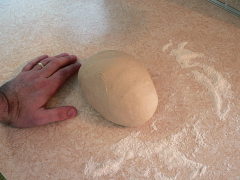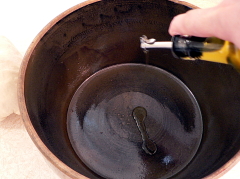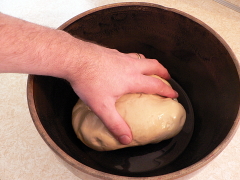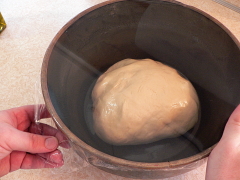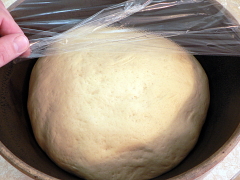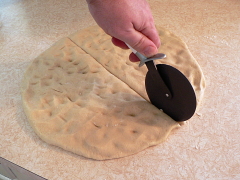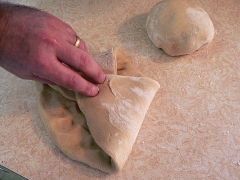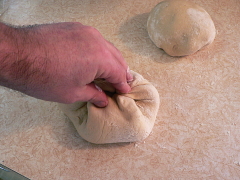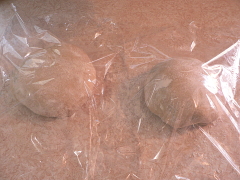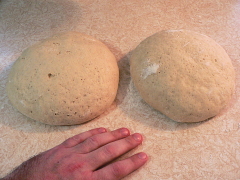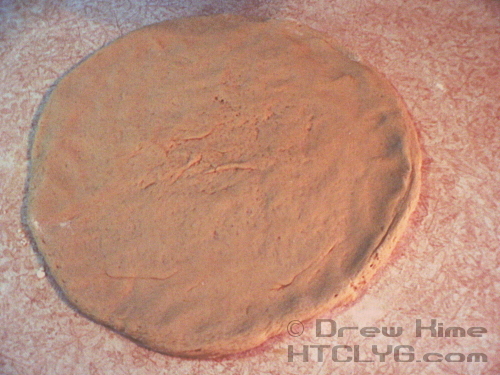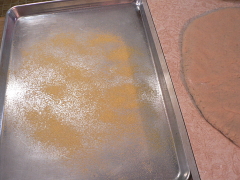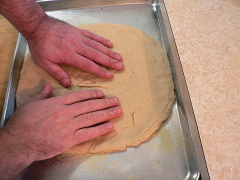My first attempt to make pizza crust didn’t come out quite right. It was too dry, but I didn’t trust my own judgment. So of course I had to try it again.
Same recipe, but doubled. And sure enough, it was way too dry until I added more water. And it came out just right. Except …
I like the chewiness of pizza crust. This one was tasty, but had a somewhat bread-like texture. I’m pretty sure what I need to do is get some high-gluten flour. I could mail order it, but first I’m going to call the Minneapolis Flour Co. (No, I don’t know why it’s called Minneapolis and it’s in Cleveland.) That’s where I get the 50-pound sacks of flour and cornmeal.
What, don’t you buy your flour in bulk?
Update: I finally got the bread flour. It works.
Ingredients
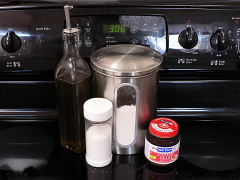
4 cups sifted flour
4 teaspoons active dry yeast (two packages)
1-1/2 cup warm water (105° – 115°)
2 teaspoons salt
1/4 cup extra virgin olive oil
Directions
Let me start with an admission. When I started making bread I was using a recipe that called for yeast measured in ounces. I suspect they meant ounces by weight, and I converted based on ounces by volume. Or vice versa. In any case, all the recipes I’ve done since then that called for one package of dry yeast should have been 2-1/2 teaspoons. I’ve been doing tablespoons. Oops.
I finally discovered my mistake after adding the yeast in this recipe. It just looked wrong. I went and looked it up in a few different places. So “one package” of active dry yeast is 2-1/2 teaspoons.
Now that that’s out of the way … Dissolve the yeast in the warm water. Don’t try to stir it too much or it will stick to your spoon. I use the handle of the spoon so there’s less for the yeast to stick to.
Add the first cup of flour and mix well.
Leave the mixture in a warm place for about 10 minutes, until you see bubbles starting to break the surface. This is “proofing” the yeast to make sure it is active.
Sift in the rest of the flour and mix roughly.
Add the salt and the olive oil. Don’t add the oil until after you’ve mixed in the water, or the oil will surround the flour and it won’t hydrate.
Knead the dough in the bowl until all the flour is incorporated. It should still be slightly sticky. If not, add a little more water.
Turn the dough out onto a floured surface and knead for 10 minutes, until it is smooth and elastic.
Add a few tablespoons of oil to a bowl and turn the dough in it until the dough is oiled all over. Cover the bowl with plastic wrap or a wet towel and set somewhere warm for 45 minutes to an hour-and-a-half, until the dough is doubled in size.
Turn the risen dough out onto a floured surface.
Punch it down, knocking most of the air out of it.
Unless you’re making a really huge pizza, cut the dough into two equal pieces.
Fold the edges in, then turn over and tuck all the edges under.
Cover the dough with plastic again and leave until it has doubled in size again.
Press the dough out into a circle with your fingertips, then smooth it out to a 12-inch circle.
This is easier to show than to describe. (If you can’t see the video in email, view this post at the blog.)
You can top the crust now, or leave it to rise one more time if you want a thicker crust.
If you don’t have a pizza stone, dust a baking sheet with cornmeal to keep the dough from sticking. Don’t skimp on the cornmeal, it’s cheap and you really don’t want sticking.
Transfer the crust to the baking sheet, add your favorite toppings, and bake at 500° for 15 minutes.
And that’s it.
Oh don’t worry, I’ll show you the finished product real soon now. But first I’ve got to show you how I made the sausage. Stay tuned …
